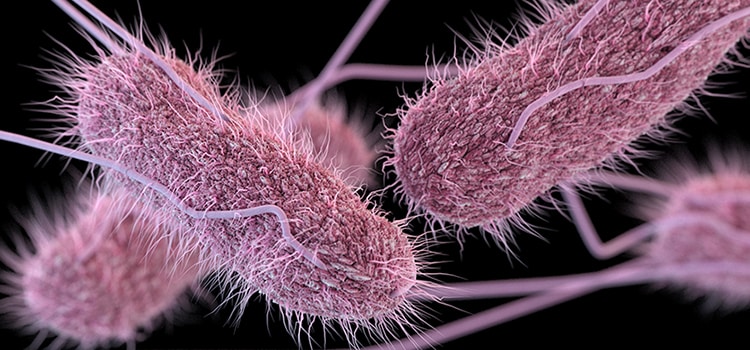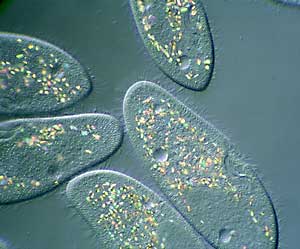BIOLOGY 11 : 6 KINGDOMS
Kingdom Archaebacteria

http://kleephylogenyproject.blogspot.ca/2011/01/archaebacteria-eubacteria.html
1) Thermoacidophile (same scientific name): Thermoacidophile, also known as thermophile, live in extremely hot, acidic water, and in moist areas within and surrounding sulfur hot springs. They require a hot environment, however some search for more extreme hot water environment. This organism is classified in the archaea domain because they live in an extreme environment. Its domain is archaea because it does not have a nuclei and has only one cell.
https://sites.google.com/site/botany317/session-2/archaea/methanogens
2) Methanogens (Methanobacterium): Methanogens are microorganisms that can be found in environments that are anaerobic which means, no oxygen. They produce methane as a metabolic byproduct in anoxic conditions. This microorganism is part of the kingdom archaebacterial because it can live in environments without oxygen. Its domain is archaea because it is only a single-celled organism without a nuclei.
Kingdom Eubacteria
https://www.cdc.gov/salmonella/index.html
1) Salmonella (Salmonella typhimurium): Salmonella is a bacteria that is considered part of kingdom Monera, in the bacteria domain, that can cause infections and diarrheal illness in humans. This bacteria has no nucleus which determines that it’s part of bacteria domain.
https://www.pinterest.ca/explore/streptococcus-pyogenes/
2) Streptococcal (Streptococcus): Streptococcal is a spherical bacteria that causes group A strep infections. An infection called strep throat, is an infection of the back of the throat including the tonsils. This horrible infection is caused by group A strep infections. This bacteria is part of kingdom eubacteria because it has no nucleus like Salmonella. Its domain is also bacteria because of its lack of a nucleus.
Kingdom Protista
http://101science.com/paramecium.htm
1) Paramecia (Paramecium) : Paramecia are single-celled protista that are naturally found in aquatic habitats. Paramecia feed on microorganisms like bacteria, algae, and yeasts. This organism is part if the Protista kingdom and the domain would be eukaryota because it has a nuclei and it is also unicellular.
https://www.yourgenome.org/facts/what-is-african-sleeping-sickness
2) Trypanosoma brucei (same scientific name) : Trypanosoma brucei is a species that causes sleeping sickness. This species is part of the Protista kingdom and its domain is eukarya domain because it’s unicellular and it also includes a nuclei.
Kingdom Fungi
https://www.pinterest.ca/pin/469992911096642643/
1) Sac Fungi (Ascomycota) : Ascomycota, commonly known as sac fungi, produce spores in a distinctive type of microscopic sporangium called an ascus. Yeast is the most common one-celled fungi. Yeast reproduces through asexual process called budding. It is part of the kingdom fungi because it includes a fungi and its domain is eukarya.
https://en.wikipedia.org/wiki/Boletus_edulis
2) Porcino (Boletus Edulis) : Boletus edulis, commonly known as porcino or cep, grows in deciduous and coniferous forests and tree plantations. Produces spore-bearing fruit bodies above ground in summer and can grow up to 14 inches. This organism is part of kingdom fungi and its domain is eukarya because its a fungi and it has cells with a nuclei.
Kingdom Animalia
https://en.wikipedia.org/wiki/Honey_bee
1) Arthropod (Phylum Arthropoda) : These organisms are invertebrate animals that has an exoskeleton and a segmented body. For example, silkworm, mosquitoes, king crab, and etc… This is part of a kingdom Animalia and its domain is eukarya because it has a cell and a nuclei and it’s a multicellular.
Online bird guide, bird ID help, life history, bird sounds from Cornell
2) Chordate (Phylum chordata): Phylum chordata
are animals with backbones. This means it includes all fishes, amphibians, reptiles, birds, and mammals. Phylum chordata is part of the kingdom Animalia and its domain is eukarya because it has cells and a nucleus and it is multicellular.
Kingdom Plantae
http://theconversation.com/whats-behind-japans-moss-obsession-50500
1) Moss (Bryophyta) : Mosses are plants that are flowerless that are usually located in dense green clumps and it grows in shades. It is part of the kingdom plantae and its domain is eukarya because it says that eukarya includes plants.
https://www.almanac.com/plant/sunflowers
2) Sunflower (Helianthus) : Helianthus, commonly known as sunflowers, is in a family called Asteraceae. It can go grow very tall, about 3 metres, and it’s an annual plant. This plant is part of the kingdom plantae and its domain is eukarya because of the fact that it’s a plant.










